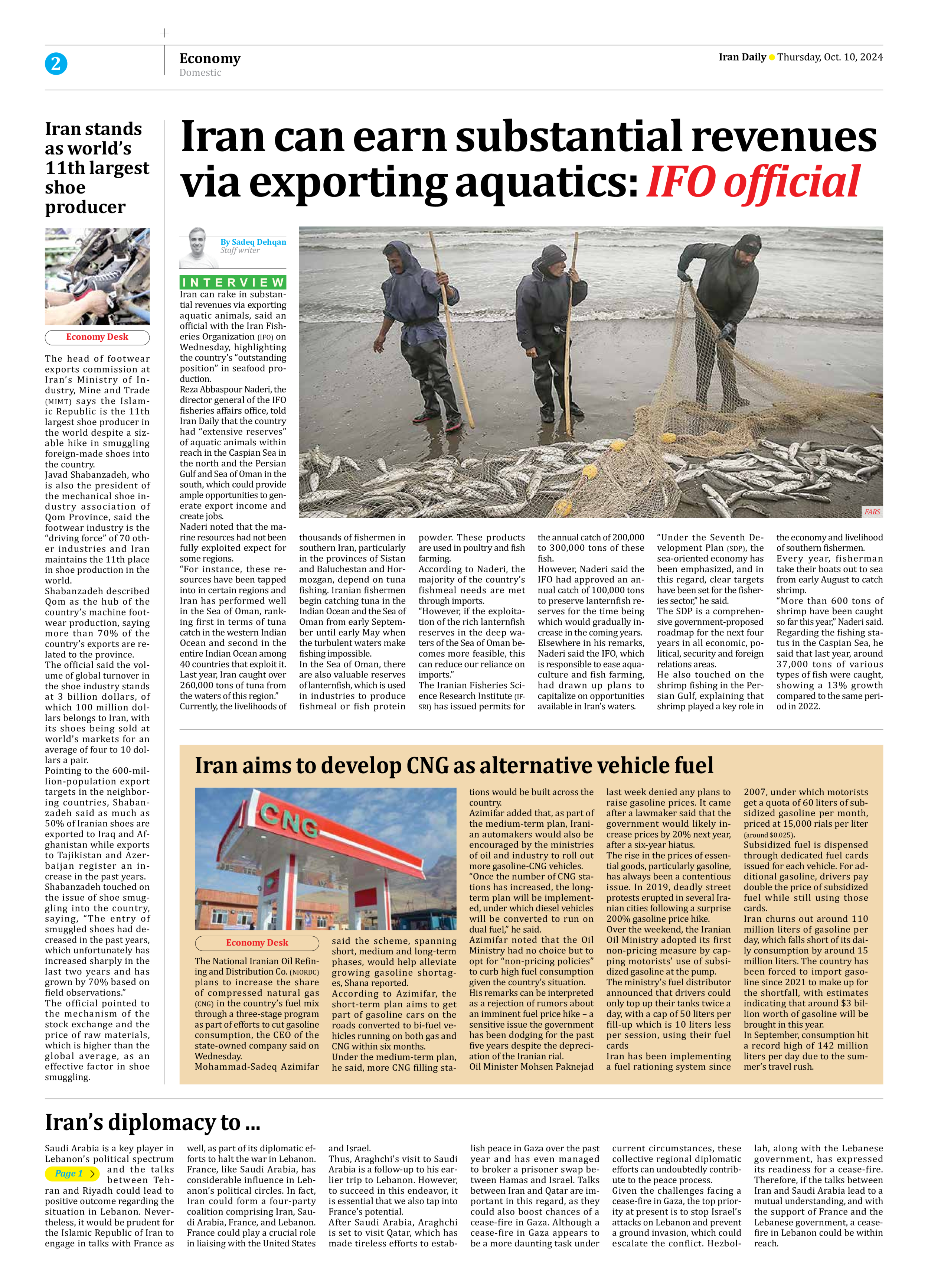
Iran aims to develop CNG as alternative vehicle fuel
The National Iranian Oil Refining and Distribution Co. (NIORDC) plans to increase the share of compressed natural gas (CNG) in the country’s fuel mix through a three-stage program as part of efforts to cut gasoline consumption, the CEO of the state-owned company said on Wednesday.
Mohammad-Sadeq Azimifar said the scheme, spanning short, medium and long-term phases, would help alleviate growing gasoline shortages, Shana reported.
According to Azimifar, the short-term plan aims to get part of gasoline cars on the roads converted to bi-fuel vehicles running on both gas and CNG within six months.
Under the medium-term plan, he said, more CNG filling stations would be built across the country.
Azimifar added that, as part of the medium-term plan, Iranian automakers would also be encouraged by the ministries of oil and industry to roll out more gasoline-CNG vehicles.
“Once the number of CNG stations has increased, the long-term plan will be implemented, under which diesel vehicles will be converted to run on dual fuel,” he said.
Azimifar noted that the Oil Ministry had no choice but to opt for “non-pricing policies” to curb high fuel consumption given the country’s situation.
His remarks can be interpreted as a rejection of rumors about an imminent fuel price hike – a sensitive issue the government has been dodging for the past five years despite the depreciation of the Iranian rial.
Oil Minister Mohsen Paknejad last week denied any plans to raise gasoline prices. It came after a lawmaker said that the government would likely increase prices by 20% next year, after a six-year hiatus.
The rise in the prices of essential goods, particularly gasoline, has always been a contentious issue. In 2019, deadly street protests erupted in several Iranian cities following a surprise 200% gasoline price hike.
Over the weekend, the Iranian Oil Ministry adopted its first non-pricing measure by capping motorists’ use of subsidized gasoline at the pump.
The ministry’s fuel distributor announced that drivers could only top up their tanks twice a day, with a cap of 50 liters per fill-up which is 10 liters less per session, using their fuel cards
Iran has been implementing a fuel rationing system since 2007, under which motorists get a quota of 60 liters of subsidized gasoline per month, priced at 15,000 rials per liter (around $0.025).
Subsidized fuel is dispensed through dedicated fuel cards issued for each vehicle. For additional gasoline, drivers pay double the price of subsidized fuel while still using those cards.
Iran churns out around 110 million liters of gasoline per day, which falls short of its daily consumption by around 15 million liters. The country has been forced to import gasoline since 2021 to make up for the shortfall, with estimates indicating that around $3 billion worth of gasoline will be brought in this year.
In September, consumption hit a record high of 142 million liters per day due to the summer’s travel rush.







